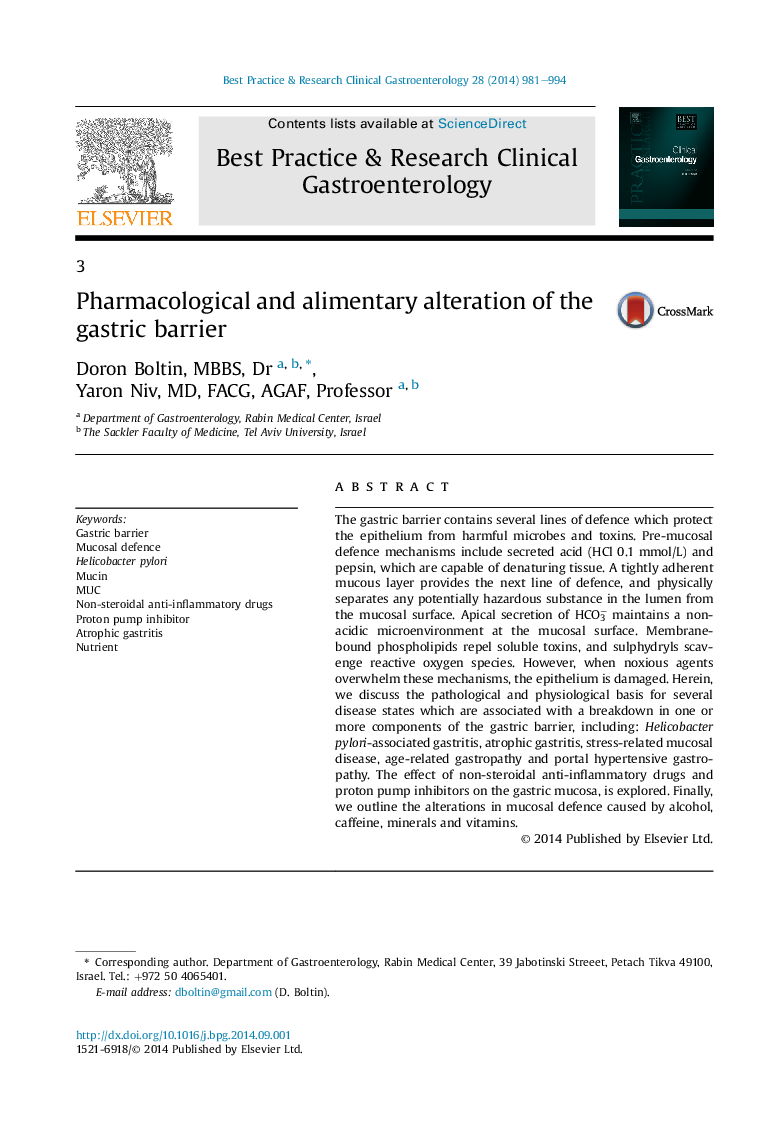| Article ID | Journal | Published Year | Pages | File Type |
|---|---|---|---|---|
| 3254068 | Best Practice & Research Clinical Gastroenterology | 2014 | 14 Pages |
The gastric barrier contains several lines of defence which protect the epithelium from harmful microbes and toxins. Pre-mucosal defence mechanisms include secreted acid (HCl 0.1 mmol/L) and pepsin, which are capable of denaturing tissue. A tightly adherent mucous layer provides the next line of defence, and physically separates any potentially hazardous substance in the lumen from the mucosal surface. Apical secretion of HCO3− maintains a non-acidic microenvironment at the mucosal surface. Membrane-bound phospholipids repel soluble toxins, and sulphydryls scavenge reactive oxygen species. However, when noxious agents overwhelm these mechanisms, the epithelium is damaged. Herein, we discuss the pathological and physiological basis for several disease states which are associated with a breakdown in one or more components of the gastric barrier, including: Helicobacter pylori-associated gastritis, atrophic gastritis, stress-related mucosal disease, age-related gastropathy and portal hypertensive gastropathy. The effect of non-steroidal anti-inflammatory drugs and proton pump inhibitors on the gastric mucosa, is explored. Finally, we outline the alterations in mucosal defence caused by alcohol, caffeine, minerals and vitamins.
